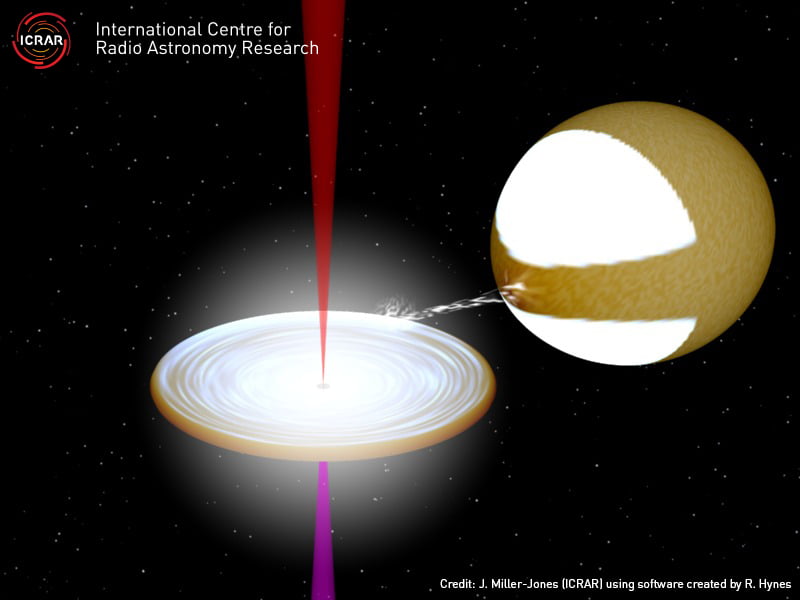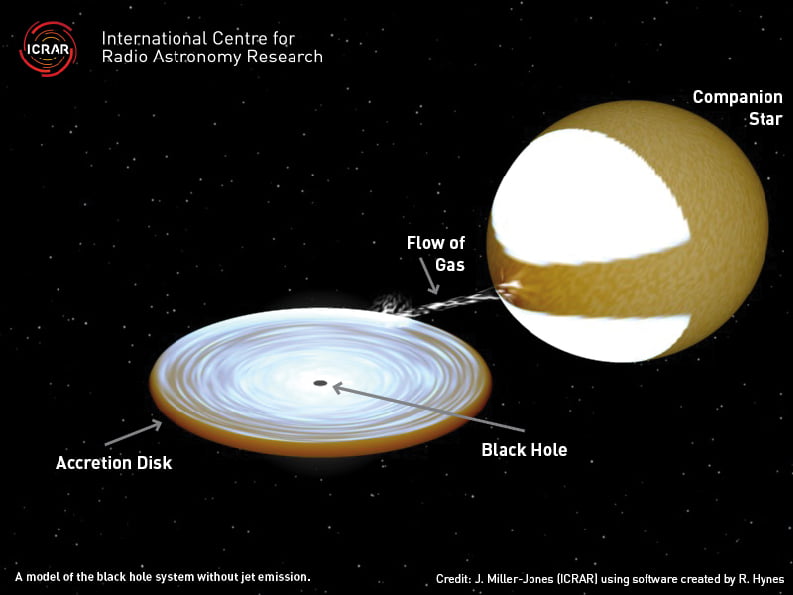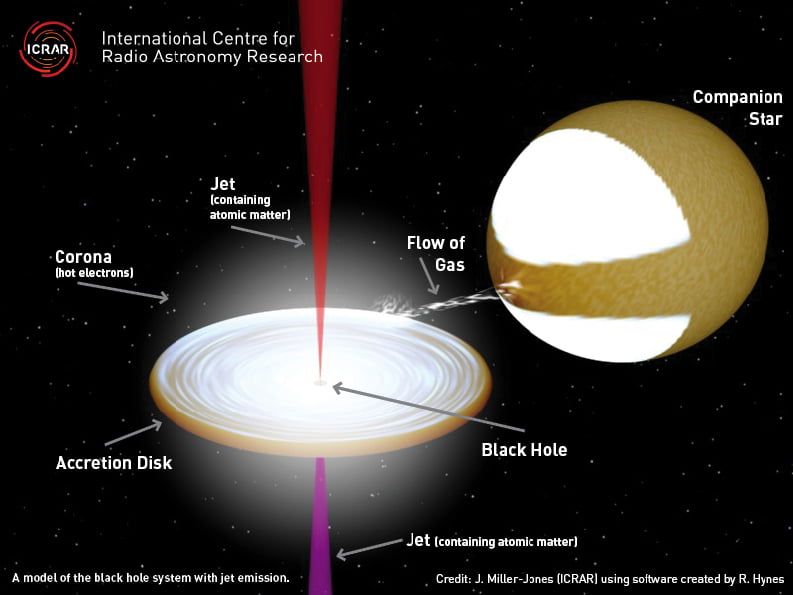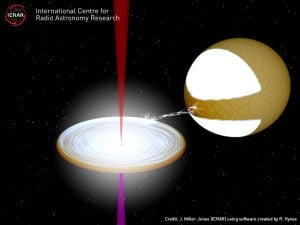An international team of astronomers has answered a long standing question about the enigmatic jets emitted by black holes, in research published today in prestigious journal Nature.
Jets are narrow beams of matter spat out at high speed from near a central object, like a black hole.
“Although they have been observed for decades, we’re still not sure what they are made of, or what powers them,” ESO astronomer Dr María Díaz Trigo, lead author of the study, said.
The team studied the radio waves and X-rays emitted by a small black hole a few times the mass of the Sun. The black hole in question was known to be active, but the team’s radio observations did not show any jets, and the X-ray spectrum didn’t reveal anything unusual.
However, a few weeks later, the team took another look and this time saw radio emissions corresponding to the sudden appearance of these jets, and even more interestingly, lines had appeared in the X-ray spectrum – the tell-tale signature of ordinary atoms – around the black hole.
“Intriguingly, we found the lines were not where they should be, but rather were shifted significantly,” Dr James Miller Jones from the Curtin University node of the International Centre for Radio Astronomy Research (ICRAR), who led the radio observations, said.
The same effect occurs when a siren from a vehicle changes pitch as it moves towards or away from us, as the sound wave is shortened or lengthened by the movement.
“It led us to conclude the particles were being accelerated to fast speeds in the jets, one directed towards Earth, and the other one in the opposite direction,” team member Dr Simone Migliari from the University of Barcelona said.
Dr Miller-Jones said this is the first strong evidence of such particles in jets from a typical small black hole.
“We’ve known for a long time that jets contain electrons, but haven’t got an overall negative charge, so there must be something positively charged in them too,” Dr Miller Jones said.
“Until now it wasn’t clear whether the positive charge came from positrons, the antimatter ‘opposite’ of electrons, or positively charged atoms. Since our results found nickel and iron in these jets, we now know ordinary matter must be providing the positive charge.”
Positively charged atoms are much heavier than the positrons astronomers thought might make up the jets, and therefore the jets can carry away far more energy from the black hole than previously confirmed.What’s more, astronomers aren’t sure whether the jets are powered by the spin of the rotating black hole itself, or whether they are instead launched directly from the disk of matter that surrounds the black hole.
“Our results suggest it’s more likely the disk is responsible for channelling the matter into the jets, and we are planning further observations to try and confirm this,” Dr Miller-Jones said. Using the X-ray data, the team also determined the jets were moving at 66% of the speed of light, or 198,000 km/s, the most accurate determination to date of the jet speed from a run-of-the-mill black hole that’s a few times the mass of the Sun.
For their observations, the team used the European Space Agency’s XMM-Newton satellite to observe X-ray emission from the black hole, as well as CSIRO’s Australia Telescope Compact Array for the radio observations.
Original Publication:
“Baryons in the relativistic jets of the stellar-mass back holes candidate 4U1630-47” Published in Nature online on 13/11/2013. DOI:10.1038/nature12672
Images:

A model of the black hole system with the jets that have been found to contain atomic matter. Credit: J. Miller-Jones (ICRAR) using software created by R. Hynes.

Contacts:The same model with labels showing the different components of the black hole system, on the left when the jets are inacitve. Credit: J. Miller-Jones (ICRAR) using software created by R. Hynes.

Contacts:The same model with labels showing the different components of the black hole system where the jets are active. Credit: J. Miller-Jones (ICRAR) using software created by R. Hynes.
Dr James Miller-Jones
ICRAR, Curtin University
Ph: +61 8 9266 9141
M: +61 488 484825
E: james.miller-jones@icrar.org
Dr María Díaz Trigo
European Southern Observatory
Ph: +49 89 3200 6647
E: mdiaztri@eso.org
Kirsten Gottschalk
Media Contact, ICRAR
Ph: +61 8 6488 7771
M: +61 438 361 876
E: kirsten.gottschalk@icrar.org
Megan Meates
Media Contact, Curtin University
Ph: +61 8 9266 4241
M: +61 401 103 755
E: megan.meates@curtin.edu.au


